Counter-intuitive Routes to Creativity and Productivity
By Steve Hooley

Christmas is coming and Hanukkah has passed
One week until Christmas. Twelve days after Hanukkah. Family gatherings, parties, and travel, all will cause interruptions in our writing schedules. Are these interruptions good or bad? Do they help or hurt our creativity? Do they increase or decrease our productivity?
As I contemplated a topic for this post, I remembered hearing of references to the benefit of breaks from writing to increase creativity and productivity. I had always been somewhat skeptical, being more of a puritanical believer in “put butt in chair” and write. I thought this might be a good time to take a look at some of that research on breaks.
Before I start on the topic today, I should mention that JSB wrote on a parallel topic this past Sunday, 12/12/21 – “Ways to Write When You’re Not Writing.”
Back to today’s post:
I found an article in Scientific American that summarized some of the recent research. And an article in Writer’s Digest, (Writer’s Digest, May/June 2021, pgs. 40-44, “The Curiously Effective Way to Beat Procrastination,” Michael La Ronn), had caught my eye with a discussion of “drifting.” These two articles are the basis for today’s post.
Summary of research over last ten years
In the article from Scientific American, titled “Why Your Brain Needs More Downtime,” author, Ferris Jabr, begins with a brief intro: “Research on naps, meditation, nature walks, and the habits of exceptional artists and athletes reveals how mental breaks increase productivity, replenish attention, solidify memories, and encourage creativity.”
He describes what happens when we don’t take those breaks, and defines “cerebral congestion” as that “sense of so much coming at you at once, so much to process, that you can’t deal with it all.” He then shifts to the benefit of long periods of time (vacation) away from the cause of the stress.
Apparently, people in the U.S., Canada, Japan, and Hong Kong take the fewest days off work each year (10 days), versus European Union (20 days) or the Netherlands (26 days).
Along with the intuitive belief that such continuous busyness is not healthy, there is now much empirical evidence from studies that “the benefits of vacation, meditation, and time spent in parks, gardens, and other peaceful outdoor spaces, along with napping and unwinding while awake, can sharpen the mind.” It is argued that downtime restores the brain’s attention, motivation, productivity, and creativity.
Unfortunately, the benefits of vacation may fade within two to four weeks.
Boys in the Basement and the Default Mode Network
The really interesting research has revealed how much the brain goes on working when we are not concentrating, working, or focusing. A “mysterious and complex circuit stirs to life when people are daydreaming.” This is called the Default Mode Network (DMN).
Immordino-Yang, a research scientist at USC, in a review of research on the DMN, argues that “when we are resting, the brain is anything but idle and that, far from being purposeless or unproductive, downtime is in fact essential to mental processes…”
Other research suggests the Default Mode Network is more active in highly creative people.
Power Naps
So, if we need to turn our DMN loose to do creative things for our brain, we should take more naps. Right? Many studies have established that naps “sharpen concentration and improve the performance of both sleep-deprived and the fully rested…”
Here, the interesting data is in the length if naps. One study looked at 5, 10, 20, and 30-minute naps. The five-minute naps barely improved alertness. Ten minutes and higher increased performance, but the 20 and 30-minute naps were associated with half an hour or more of “sleep inertia” (post-nap grogginess). The study concluded that 7-10-minute naps were best.
Restorative Breaks and Mindfulness Training
Here’s my favorite. Breaks taken in a natural outdoor setting (vs. in a setting full of city noise and chaos) led to a 3-times greater improvement in memory. I wonder how the sound of my chain saw (requiring ear protection) affects the benefit of the “natural outdoor setting.”
And, finally, “mindfulness training” (sustained focus on one’s thoughts, emotions, and sensations in the present moment) is believed to “improve mental health, hone one’s ability to concentrate, and strengthen memory.”
The Bonus, “Drifting”
This if from the article in Writer’s Digest. When I read this article several months ago, I shook my head. I didn’t know what to think. I grabbed a pen and wrote in the margins: “What!?” “A disease becomes a cure.” “Really?” And “Procrastinate, just not too long.”
But, after reading the other article on brain research and the benefits of taking breaks, I’m trying to be more open-minded about this approach.
If you haven’t read this article, I urge you to do so. Basically, the author is arguing for an approach to writer’s block where you “give your mind permission to do whatever it wants to fuel your creativity. Simply put, you let it be curious.” (Drifting). In the author’s case, drifting took the form of three days off just to let his curiosity explore.
Near the end of the article, he lists 5 ways to “Drift Like a Pro:”
- Read a Book About Something New
- Consume Other Content
- Meet New People
- New Experiences
- Travel
And in a final section, he writes, “Teach yourself to drift, and enjoy the journey.”
It sounds too good to be true. I don’t know if I could trust myself to drift purposefully or return from the journey. I worry that it could be addictive, or the easy way out.
Okay, time for your thoughts:
- What kind of “restorative” breaks have you taken or will you take over the Hanukkah – Christmas holiday?
- What type of naps, breaks, vacation, meditation, or drifting do you regularly practice to maintain your creativity and productivity during the rest of the year?
- BONUS POINTS – What do you think about “drifting?”
This is my last post before the Christmas – New Year’s break. Have a Merry Christmas and a Happy Productive/Creative New Year! See you in 2022.

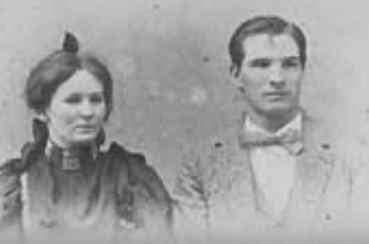 A traditional wake was held before Zona’s next-day burial and attendants noticed peculiar behavior from Trout Shue. When the casket was opened for viewing, he immediately placed a scarf over Zona’s neck as well as propping her head with a pillow and blanket. Shue then put on another spectacular show of grief and made it impossible for mourners to get a close look at her face.
A traditional wake was held before Zona’s next-day burial and attendants noticed peculiar behavior from Trout Shue. When the casket was opened for viewing, he immediately placed a scarf over Zona’s neck as well as propping her head with a pillow and blanket. Shue then put on another spectacular show of grief and made it impossible for mourners to get a close look at her face.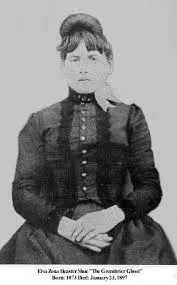 It was not in a dream, Heaster reported. It was in person. First the apparition manifested as light, then transformed to a human figure which brought a chill upon the room. For four consecutive nights, Heaster claimed her daughter’s ghost came to the foot of her bed and reported facts of the crime that extinguished her life.
It was not in a dream, Heaster reported. It was in person. First the apparition manifested as light, then transformed to a human figure which brought a chill upon the room. For four consecutive nights, Heaster claimed her daughter’s ghost came to the foot of her bed and reported facts of the crime that extinguished her life. Zona was autopsied by three medical doctors on February 22, 1897 with the official cause of death being anoxia from manual strangulation compounded by a broken neck. Bruising consistent with fingermarks was noted on Zona’s neck, her esophagus was contused, and her first and second cervical vertebrae were fractured. Anatomically, they’re known as the C1 Atlas and the C2 Axis which combine to make the first joint at the base of the skull.
Zona was autopsied by three medical doctors on February 22, 1897 with the official cause of death being anoxia from manual strangulation compounded by a broken neck. Bruising consistent with fingermarks was noted on Zona’s neck, her esophagus was contused, and her first and second cervical vertebrae were fractured. Anatomically, they’re known as the C1 Atlas and the C2 Axis which combine to make the first joint at the base of the skull.
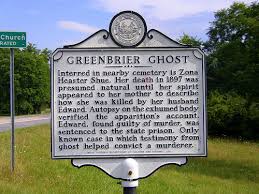 The jury was out for an hour and ten minutes before returning to find Trout Shue guilty of murdering his wife, Zona, in the first degree. He was sentenced to life imprisonment and died of an epidemic disease three years later.
The jury was out for an hour and ten minutes before returning to find Trout Shue guilty of murdering his wife, Zona, in the first degree. He was sentenced to life imprisonment and died of an epidemic disease three years later. Garry Rodgers is a retired homicide detective with a second career as a coroner investigating sudden and unexplained human deaths. Now, Garry’s come back from the forensic dead and has reincarnated himself as a crime writer.
Garry Rodgers is a retired homicide detective with a second career as a coroner investigating sudden and unexplained human deaths. Now, Garry’s come back from the forensic dead and has reincarnated himself as a crime writer. Did you ever say this? “I’m trying to write a short story, but I’m blocked. I’m getting nowhere.”
Did you ever say this? “I’m trying to write a short story, but I’m blocked. I’m getting nowhere.”
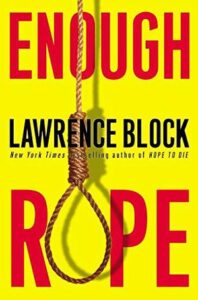 “This Crazy Business of Ours”
“This Crazy Business of Ours”


 – No more stories about husbands who kill wives, or vice versa.
– No more stories about husbands who kill wives, or vice versa.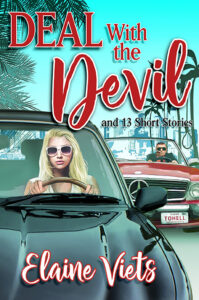
 Since everyone’s probably busy with holiday prep (unless you’re like me and your holiday is over), gift giving is or was part of the mix. Today, I’m talking about gifts authors can give to readers. Reader Magnets.
Since everyone’s probably busy with holiday prep (unless you’re like me and your holiday is over), gift giving is or was part of the mix. Today, I’m talking about gifts authors can give to readers. Reader Magnets.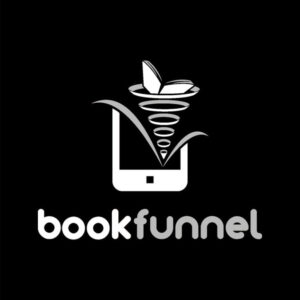

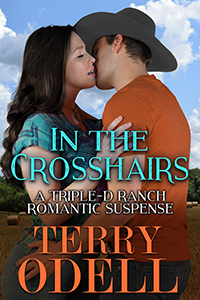





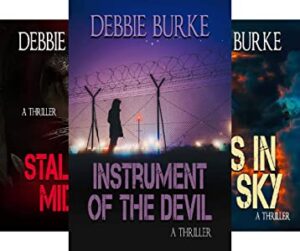



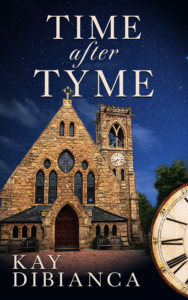

 Patricia Bradley is a Carol finalist and winner of an Inspirational Readers’ Choice Award in Suspense, and three anthologies that included her stories debuted on the USA Today Best Seller List. She and her two cats call Northeast Mississippi home–the South is also where she sets most of her books. Her romantic suspense novels include the Logan Point series and the Memphis Cold Case Novels. Crosshairs, the third book in the Natchez Trace Park Rangers series, released November 2, 2021. She is now hard at work on the fourth book, Deception, and will soon start work on her fourth series set in the Cumberland Plateau around Chattanooga, Tennessee..
Patricia Bradley is a Carol finalist and winner of an Inspirational Readers’ Choice Award in Suspense, and three anthologies that included her stories debuted on the USA Today Best Seller List. She and her two cats call Northeast Mississippi home–the South is also where she sets most of her books. Her romantic suspense novels include the Logan Point series and the Memphis Cold Case Novels. Crosshairs, the third book in the Natchez Trace Park Rangers series, released November 2, 2021. She is now hard at work on the fourth book, Deception, and will soon start work on her fourth series set in the Cumberland Plateau around Chattanooga, Tennessee..